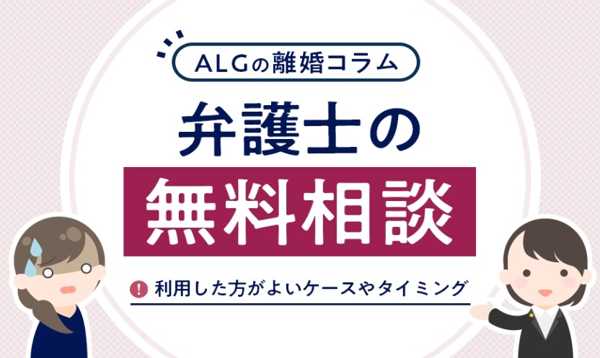ロボアドバイザーで始める資産運用|おすすめ比較と選び方ガイド
Understanding Thyroid Eye Disease (TED): Symptoms, Risk Factors, and Treatment Options
Thyroid Eye Disease (TED) is an autoimmune condition that affects the eyes, often linked to thyroid disorders such as Graves’ disease. While its early symptoms may resemble common eye issues like dry eye, conjunctivitis, or allergies, TED can progressively worsen and lead to serious complications if left untreated. Recognizing the warning signs early can help individuals seek appropriate care and prevent long-term eye damage.
Thyroid Eye Disease (TED) is an autoimmune condition that affects the eyes, often linked to thyroid disorders such as Graves’ disease. While its early symptoms may resemble common eye issues like dry eye, conjunctivitis, or allergies, TED can progressively worsen and lead to serious complications if left untreated. Recognizing the warning signs early can help individuals seek appropriate care and prevent long-term eye damage.

Key Symptoms of Thyroid Eye Disease
TED symptoms can range from mild discomfort to severe vision impairment. Below are the most common signs to watch for:
1. Bulging Eyes (Proptosis)
One of the most recognizable symptoms of TED is eye bulging, which occurs due to inflammation and swelling of the tissues behind the eye. This forward displacement of the eye can lead to increased exposure, irritation, and difficulty closing the eyelids completely.
2. Dry, Gritty, or Irritated Eyes
Many TED patients experience chronic dryness, redness, and a gritty sensation in their eyes. While these symptoms are often mistaken for dry eye disease, conventional eye drops may not provide sufficient relief, indicating an underlying issue.
3. Eyelid Swelling and Retraction
Swelling of the eyelids is common in TED and can give the eyes a puffy or inflamed appearance. Additionally, eyelid retraction—where the upper eyelids pull back, exposing more of the eye—can contribute to a wide-eyed, staring expression.
4. Double Vision (Diplopia)
Swelling in the eye muscles can lead to misalignment of the eyes, causing double vision (diplopia). TED-related double vision may worsen over time, particularly when looking in different directions.
5. Eye Pain and Pressure
Many people with TED experience persistent pain or pressure behind or around the eyes, which can intensify with eye movement or strain.
6. Sensitivity to Light (Photophobia)
Eye inflammation in TED can result in heightened sensitivity to bright lights. This discomfort is sometimes misattributed to migraines or general eye strain.
7. Difficulty Moving the Eyes
As TED progresses, inflammation in the eye muscles can lead to stiffness and restricted movement. Patients may have trouble shifting their gaze in certain directions, often accompanied by pain.
TED symptoms vary in severity and can develop gradually. If you experience persistent eye discomfort, swelling, or vision changes, especially if you have a thyroid disorder, seek medical evaluation as soon as possible.
How Common Is Thyroid Eye Disease?
TED is more prevalent than many realize, particularly among those with thyroid conditions. Research suggests that up to 50% of individuals with Graves’ disease may develop TED to some extent.
According to data from the National Library of Medicine, TED affects:
- 16 out of 100,000 women annually
- 2.9 out of 100,000 men annually
TED can occur at any age but is most commonly diagnosed in two peak age groups:
- Women:Ages 40–44 and 60–64
- Men:Ages 45–49 and 65–69
Older individuals with TED may develop more severe symptoms, including optic nerve compression (dysthyroid optic neuropathy, DON), which can lead to vision loss if left untreated.
Risk Factors for TED
Certain factors can increase the likelihood of developing or worsening TED:
✅ Thyroid Disorders: Graves’ disease is the most common underlying condition, but TED can also occur in those with hypothyroidism or euthyroid states.
✅ Smoking: Studies show that smokers are at a significantly higher risk of developing TED and tend to experience more severe symptoms. Quitting smoking may reduce disease progression.
✅ Gender & Genetics: Women are more likely to develop TED, but men may present with more severe forms. A family history of autoimmune thyroid disorders may also increase risk.
✅ Environmental Triggers: Stress, exposure to pollutants, and certain medications may contribute to TED onset or symptom severity.
Treatment Options for Thyroid Eye Disease
TED treatment depends on the severity of symptoms and aims to reduce inflammation, relieve discomfort, and preserve vision.
1. Medications
- Tepezza (Teprotumumab):The first FDA-approved drug specifically for TED, this medication targets inflammation-causing proteins to reduce bulging, double vision, and swelling.
- Corticosteroids:Anti-inflammatory drugs may help control swelling and pain, particularly in moderate cases.
2. Supportive Care for Mild Cases
- Artificial Tears:Lubricating eye drops can relieve dryness and irritation.
- Sunglasses:Protect the eyes from light sensitivity and irritation.
- Prism Glasses:These may help correct double vision by aligning the visual field.
3. Surgical Options for Severe Cases
- Orbital Decompression Surgery:Reduces pressure in the eye socket, helping alleviate proptosis and optic nerve compression.
- Strabismus Surgery:Corrects eye misalignment to improve double vision.
- Eyelid Surgery:Helps restore normal eyelid positioning and function.
Why Early Diagnosis Matters
Early detection of TED can significantly improve treatment outcomes and prevent complications such as permanent vision loss or severe eye disfigurement. By recognizing symptoms early and seeking specialized care, individuals with TED can receive the appropriate interventions to manage their condition effectively.
If you or someone you know has thyroid-related eye symptoms, don’t wait—consult an eye care specialist today for a thorough evaluation and personalized treatment plan.









